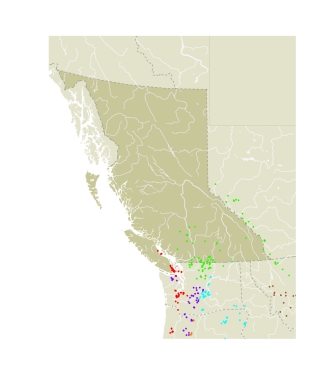Low-elevation populations on Vancouver Island fly from mid-April to mid-May. Interior alpine populations fly from late June to early August. Danby (1890) first observed the larvae at Beacon Hill Park on the flats above the sea cliffs. They were feeding on the introduced rib-wort plantain, Plantago lanceolata. The larvae feed until the fourth or fifth instar, and then hibernate until the following spring, when they mature, pupate, and emerge as adults by mid-April (Shepard 2000a). In 1972 Shepard (2000a) found larvae from the Hornby Island population feeding on the native plantain, P. maritima, as well as P. lanceolata. The adults on Hornby Island utilize spring gold, Lomatium utriculatum, as the primary nectar source (Shepard 2000a). At the site of the Beacon Hill and Uplands Parks extinct populations, there are virtually no spring gold plants left, but the introduced rib-wort plantain is still plentiful. Thus the loss of an adult nectar source is probably the most important reason for extinction.
Parmesan (1996) conjectured that BC populations have become extinct because of global warming. All but one of the extinct populations, however, became extinct well before global warming was a significant phenomenon. The last to become extinct, in the early 1990s, did so because its habitat was overrun by Scotch broom (CSG). This habitat was a powerline right-of-way that had been kept clear as a Christmas tree farm. After the tree farm was abandoned, BC Hydro adopted a policy of encouraging Scotch broom growth to reduce tree regeneration under powerlines. The one healthy population is on Hornby Island, where there is no significant Scotch broom. The local community is monitoring Scotch broom so that it does not invade the habitat of Taylor's Checkerspot.
|
|

